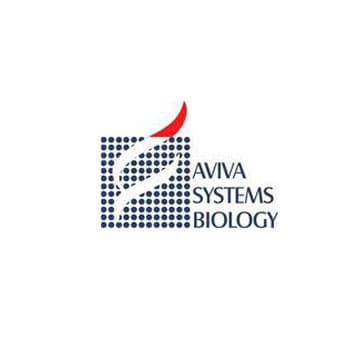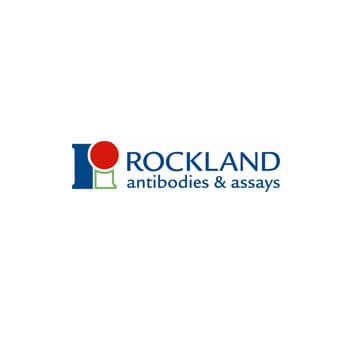
Supplier:
Aviva Systems Biology Incorporatedhuman FGF-Basic ELISA kit (96 Wells)
The 18 kDa FGF basic isoform can be found in both the cytoplasm and the nucleus and is also the form that is secreted (8-10). Storage pools within the cell or on cell surface heparan sulfate proteoglycans (HSPG) are likely (2). Transcription from alternate start sites produces 21-23 kDa forms found only in the nucleus (8, 9). High and low molecular weight human FGF basic isoforms target the expression of different genes (9, 10). The 18 kDa human FGF basic sequence shares 97% and 99% aa identity with mouse/rat and bovine/ovine FGF basic, respectively (6, 7). Expression of FGF basic is nearly ubiquitous. However, disruption of the mouse FGF basic gene gives relatively mild cardiovascular, skeletal, and neuronal phenotypes, suggesting compensation by other FGF family members (11-15). Transgenic over-expression of FGF basic mainly influences development and mineralization of bone (4, 16, 17).
Four FGF tyrosine kinase receptors (FGF R) and their splice variants show differential binding of FGFs (1). FGF basic preferentially binds FGF R1c and 2c, for which it has picomolar affinity (1, 2). FGF basic also has a number of other binding partners that fine-tune FGF basic activities, according to their locations and quantities. FGF basic modulates such normal processes as angiogenesis, wound healing, tissue repair, learning and memory, and embryonic development and differentiation of heart, bone and brain (2 - 4). It is upregulated in response to inflammation via mediators such as TNF-?, IL-1?, IL-2, PDGF, and nitric oxide (2). Many human tumors express FGF basic, which may correlate with tumor vascularity (2, 5).
For the quantitative determination of human Fibroblast Growth Factor-basic(FGF-b,FGF-2) concentrations in cell culture supernates, serum, and plasma.
Principle of the assay: This assay employs the quantitative sandwich enzyme immunoassay technique. A monoclonal antibody specific for FGF-basic has been pre-coated onto a microplate. Standards and samples are pipetted into the wells and any FGF-basic present is bound by the immobilized antibody. Following incubation unbound samples are removed during a wash step, and then a detection antibody specific for FGF-basic is added to the wells and binds to the combination of capture antibody- FGF-basic in sample. Following a wash to remove any unbound combination, and enzyme conjugate is added to the wells. Following incubation and wash steps a substrate is added. A coloured product is formed in proportion to the amount of FGF-basic present in the sample. The reaction is terminated by addition of acid and absorbance is measured at 450nm. A standard curve is prepared from seven FGF-basic standard dilutions and FGF-basic sample concentration determined.
Prices direct from Aviva Systems Biology Incorporated
Quick response times
Exclusive Absave savings/discounts
Applications
ELISA
Reactivities
Hum
Applications
ELISA
Reactivities
Hum
Applications
ELISA, WB
Hosts
Mouse
Applications
IHC
Hosts
Mouse
Latest promotions
Buy any polyclonal or monoclonal antibody from our extensive range of pre-made antibodies and for a limited time only receive a $50 discount!(T&C apply:...
New brilliant antibodies, and new lower prices!For flow cytometry reagents in general, \"bright is better.\" The violet-excitable BD Horizon™ BV421 and...
10% Discount on 2 Rabbit Polyclonal Antibody Service. With over 20 years experience, SDIX has developed into the premier US custom antibody producer,...
For the past decade scientists have extensively used ATS secondary toxin conjugates to make their own targeted toxins for in vitro use.The ability to combine...
We're so sure that you'll prefer Cayman Assay kits over your present brand that we're willing to give you a free assay kit to prove it!
Did your supplier increase the price of Fetal Bovine Serum? Did they substitute the US Origin with USDA? Well say no more! Innovative Research is still...
Bulk Cytokines with Custom Vialing.20 - 50% off cytokines, growth factors, chemokines and more...For a limited time Cell Sciences is offering substantial...
Are you planning to have a customised antibody made for your research?Since 2000, Everest has been producing a catalog containing thousands of affinity...
Top suppliers
Agrisera AB
11 products
Biotrend
Biosensis
969 products
ABBIOTEC
3011 products
SDIX
1 products
Spring Bioscience
2291 products
Cell Signaling Technology
4976 products
Rockland Immunochemicals, Inc.
7592 products
Boster Immunoleader
1533 products
OriGene Technologies Inc.
5281 products
Maine Biotechnology Services
227 products
BD (Becton, Dickinson and Company)
1 products
ABNOVA CORPORATION
Randox Life Sciences
1502 products










